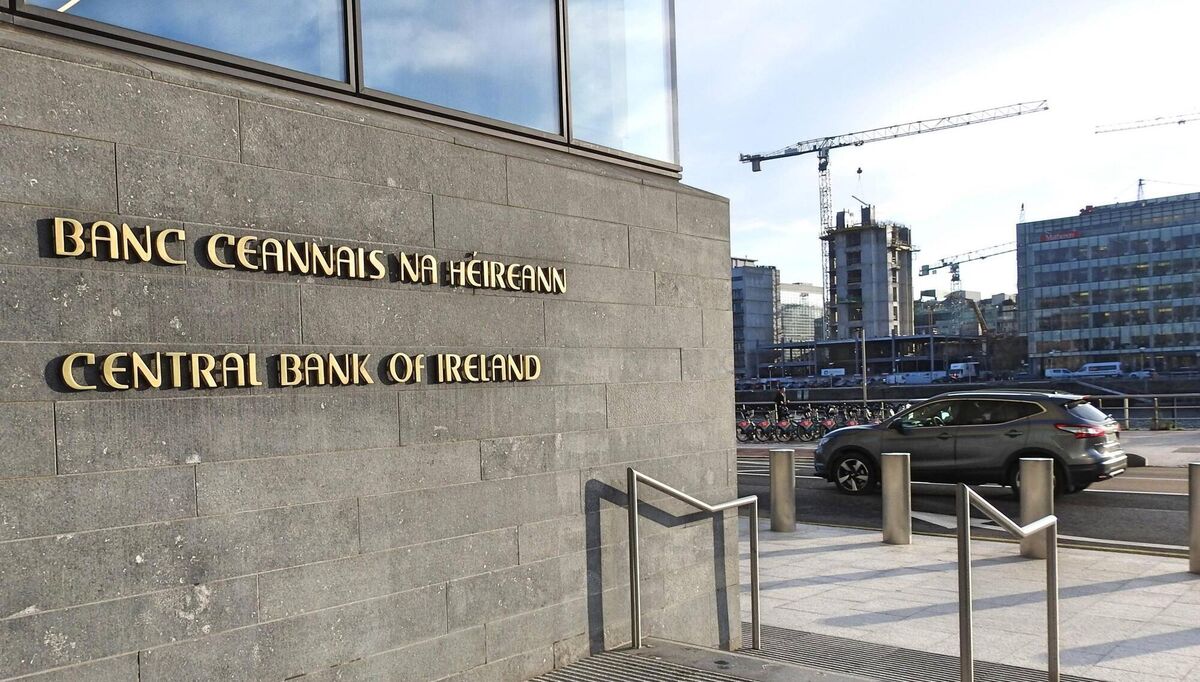Emer Walsh: Female representation at senior levels is rising, but only to a certain point

Among the 56 companies that joined the charter in 2022, female representation on executive committees increased to 37%, from 33% in 2022.
It’s not that women don’t work in the financial services sector, as new data suggests that representation is only increasing, but something happens at a point within the hierarchy that prevents them from filling the top jobs.
Female representation on the boards of financial services firms rose to 39% at the start of this year, increasing from 35% in 2022.
The data relates to companies that have signed the Women in Finance Charter, an initiative which aims to improve female representation in financial services firms here.
Comprising 65,000 employees across 91 firms, the charter found that among original signatories, female representation on boards rose significantly.
Among the 56 companies that joined the charter in 2022, female representation on executive committees increased to 37%, from 33% in 2022.
In addition, a quarter of CEOs among these original firms are female, an increase of four percentage points since 2022.
Across charter signatories as a whole, female representation grew at the senior management level from 37% to 41%, while on an executive committee level, representation rose from 30% to 35%.
It also found that female representation among chief executive officers rose from 22% to 26% and grew from 35% to 39% on a board level.
With 91 firms now signatories to the Charter, representing 50% of all employees in the financial services sector, significant progress has been made.
However, there is still much more work to be done across all sectors of the Irish economy, including finance.
In May of this year, Ireland became one of just two states in the European Union to have no women leading any of its listed companies following the retirement of Margaret Sweeney as the chief executive of Irish Residential Properties REIT.
Ms Sweeney was replaced by Eddie Byrne, a former executive with US investment firm Lone Star and Anglo Irish Bank.
Her departure marked a major setback for a country once at the forefront of rapid social change in Europe, with all 31 companies listed on Euronext Dublin’s website now headed by a man.
This is not a problem unique to Ireland, however, as much of Europe paints a similar picture with it being commonplace for large stock exchanges to have less than a handful of female chief executives.
Despite this, Ireland still remains an outlier, with almost every other country in the EU, except the small state of Luxembourg, having at least one woman at the top of a listed company, according to Bloomberg.
All other member states have female chief executives, besides Slovakia, which has one company, Biotika, run by three directors including a woman.
According to the European Institute for Gender Equality, only 8% of chief executive positions at the largest listed companies in the EU28 in 2023 were women.
The picture becomes even bleaker for Ireland when compared to similar-sized countries. Even across Scandinavia, women are scarce in top roles, despite their progressive reputations.
Sweden’s main OMX Stockholm 30 index was earlier this year left with only one female chief executive among 30 after a series of resignations among women in top roles, including fast-fashion giant H&M's Helena Helmersson and phone carrier Telia’s Alison Kirkby. Both former CEOs were replaced by men.

Ireland’s lack of gender equality at the top level is further exacerbated by the companies and their respective sectors that dominate the Irish stock exchange.
Euronext Dublin is made up of many traditionally male-heavy industries such as construction and mining, as well as boasting large caps such as Ryanair and Kingspan.
While there has been progress in achieving equality at the board level in Ireland, the lack of a female CEO in a listed company shows there is much to be done to shatter the glass ceiling.
Even within the finance sector, while the proportion of women in CEO positions rose slightly in the two years to 2024, major disparities still exist across both the public and private sectors.
In its Gender Pay Gap report published at the end of last year, the Central Bank highlighted the higher proportion of men in the upper half of the group’s pay bands, while women hold the majority of roles in the lower-paid job grades.
It reported that men accounted for almost two-thirds (64%) of those ranked as head of the division and 57% of the senior leadership team, as well as dominating in the technical and general band, where they account for 81% of posts.
While findings from the Women in Finance Charter were largely welcomed, congratulatory remarks were overshadowed by the recognition that more needs to be done across the industry.
The companies that signed the charter were asked to choose the actions they had found most effective for improving gender balance.
In last year's report, flexible working was the most common action highlighted by firms, however, this year saw more than a third of those surveyed believe female career development and leadership training were the most effective actions to improve gender balance.
Companies also said better gender balance in succession planning, developing programmes for females in middle and junior management, improving flexible working and identifying female leaders were also effective actions.
In terms of the main barriers to achieving gender balance, companies cited low turnover and the low number of female applicants.
The report also stated that flexible work practices may further promote greater gender balance, but only if they are made available on all levels of the organisation, otherwise, this would reinforce the concentration of women at these levels.
Read More
It also stated that it would only work if both men and women took up flexible work practices.
With many companies currently trying to fight back against hybrid and flexible working conditions in a move to get employees back to the office, concerns have been raised that this will put further pressure on women.
Already, women in leadership positions are leaving at an unprecedented rate, according to a report from Lean In and McKinsey & Co.
Hence, while significant progress has been made, companies pushing for a more regimented work structure may face the unintended consequence of alienating female employees and undoing existing progress.











